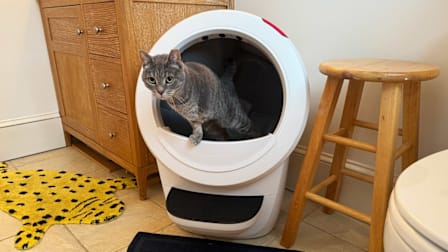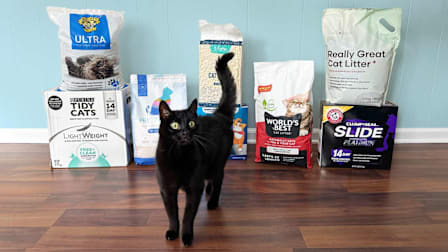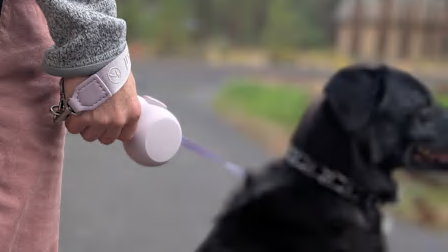Best Dog Leashes
A good leash enhances communication between you and your furry friend. Here are six top models worth barking about.
When you shop through retailer links on our site, we may earn affiliate commissions. 100% of the fees we collect are used to support our nonprofit mission. Learn more.

My dog Rugby is perfect—almost. She’s super-friendly to all people and at least courteous to other dogs. Her needs are simple: food, affection, and a tennis ball thrown with vigor. As a smallish female golden retriever, she’s that blonde, smiley, fluffy dog everyone wants to come up and pet.
A Tool for Safety
“A leash is a tool for safety,” she says. “Your dog sees a squirrel, and if you don’t have control, your back is gone. Maybe your dog, too.”
The most basic task of a leash, Perry says, is to tether your dog securely. And there are lots of factors involved, starting with the tensile strength of the materials in the design. You also have to consider the walker’s ability to hold on to the handle and the strength of the clasp at the dog’s end.
“There’s a potential for any clasp to break,” she says. So try to inspect each element of your leash on a regular basis, especially if your dog is fond of playing tug-of-war.
Your larger goal, of course, is to avert these bouts of doggie misbehavior. And with the help of the right leash, Perry says, you can remind your dog to behave properly with a gentle tug.
“Look at the leash as the connection between you and your dog,” she says. “You’re communicating, ‘We’re going to work together.’ ”
Which is why you don’t want to just buy the heaviest, strongest leash you can find. If it’s oversized, it gets in the way of the gentle inputs that help you and your pet maintain a healthy balance between strolling and sniffing out trouble.
“I have people come in with a spindly little leash for a huge dog and these huge, clumsy leashes for a little dog,” she says with a laugh.
For most urban and suburban environments, Perry suggests a leash that’s between 4 and 6 feet long. If you and your dog are relatively small, consider a shorter span. If you’re both large, lean more toward 6 feet. Longer leashes, like 8 feet and more, work better in places that are open and uncrowded, and where it’s rare for another person, dog, or large animal to sneak up on you. Think of them as the next best thing to leash-free.
The thickness of the leash should also correspond to your dog’s size. A very big or very strong dog might need a 1-inch-wide flat leash or a “rope” leash that’s a half-inch or more. But that same leash would be too thick and heavy for a much smaller dog. You want something that’s supple and comfortable to hold and also strong enough to restrain your dog.
As far as the actual material, think about al dente pasta, at least texture-wise: flexible but with a little backbone. When you jiggle a good leash, the dog should know that you’re trying to communicate something—about the pace of the walk, the distance from your heel, or that tempting discovery just ahead.
To help you find the best leash for your pet, we selected six popular options from brands such as Atlas, Flexi, and Wilderdog and enlisted friends with dogs to help us evaluate them. Before we dive into what we learned, here’s a closer look at our four-legged testers.
Meet Our Judges

Photos: Allen St. John/Consumer Reports, Janet Pew, Melissa Schaffer, Sally St. John Photos: Allen St. John/Consumer Reports, Janet Pew, Melissa Schaffer, Sally St. John
Rugby: At more than 50 pounds, my dog Rugby was the group’s heavyweight. She’s an 8-year-old golden retriever named after the southwest Virginia hometown of the legendary guitar builder Wayne C. Henderson. She’s generally well-behaved on a leash, but her laid-back demeanor can go out the window if she sees a squirrel or a chipmunk. She loves tennis balls more than Coco Gauff.
Pippa: The wily veteran in our group, Pippa is a 16-year-old Havanese. She’s got doggie GPS and knows exactly which route she wants to take on every walk and absolutely refuses to detour. Despite her petite size, she’s fearless, playing watchdog by barking at anyone who approaches. One of the grown boys in Pippa’s family has a Great Dane named Atlas, and Pippa has no trouble walking up to Atlas’s huge dog bed and plunking herself down defiantly in the middle.
Seth: Rescued in poor condition from a kill shelter in Georgia, Seth is a beagle mix. Aside from being the most adorable 9-ish-year-old dog on the planet, according to his mom, Melissa, he’s eccentric, capricious, and fiercely individualistic. That means he can sometimes be a handful on a walk. His appetite for suddenly snatching things—from baby bunnies to the smelliest roadkill—demands scrupulous attention when he’s on a leash.
Moxie: A year-old goldendoodle, Moxie is the group’s rookie. She’s still learning leash manners, so walking her can be a bit of an adventure for her owners, Sharon and Cathy. When she’s not on a walk, 31-pound Moxie’s passion is playing fetch. She’ll sometimes add to the fun by pretending she doesn’t know where her toy landed, even when she’s standing on top of it.
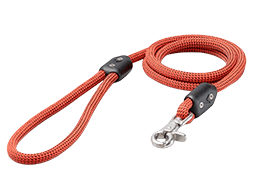
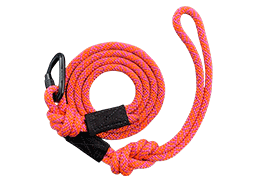
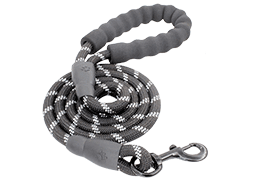
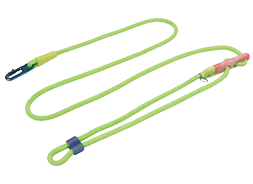
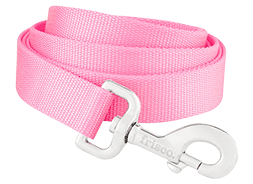
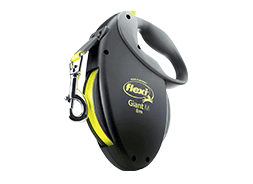
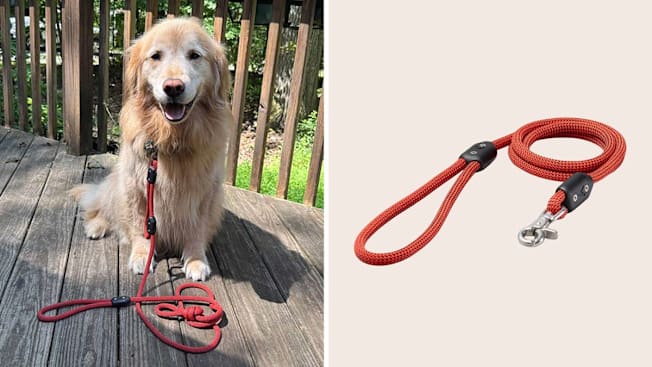
The Atlas is a refined climbing-rope leash with a premium price. If the somewhat similar Wilderdog (below) seems as if it belongs in a Ford Bronco with the doors off, this leash channels the rugged but super-spendy Mercedes-Benz G-Wagon. The dry-treated climbing rope (what real mountaineers use because it keeps the rope pliable under adverse conditions and prevents abrasion and wear) has a silky finish, and it drapes beautifully, which makes it easy for me to feel exactly what Rugby is doing, and vice versa. Strong yet supple, it lets me take up any slack in a flash.
Ordering the Atlas is like filling out a luxury car configurator: It comes in two lengths, with or without a traffic handle, and up to eight colors that are likely to match your dog, your outfit, and even the vibe of your neighborhood. I was particularly smitten with the moss color; the ruby red was much richer and more attractive in person. Atlas offers add-on accessories ranging from a $5 poop bag holder to a $45 foldable water dish.
The leash is held together with robust and replaceable plastic clamps that secure the handle and the clasp. The stainless steel clasp is beautifully crafted, striking a nice balance between ease of use and solid retention.
Dog reactions: I do wonder if, given the opportunity, Rugby may have tried to gnaw on those black plastic clamps, which have roughly the same texture and hardness as a nylon chew bone. More to the point, the 5-foot length I tested felt just a bit short for a 50-pound dog, though it’s fine for smaller dogs. I found the 8-foot version to be better for a leisurely walk in the park, but perhaps a bit long for a walk in the city. Tying a knot in the leash, as Perry suggested, provided a nifty solution, reducing the total length to around 6½ feet and giving me a place to grab the leash with my opposite hand. I still wish there was a 6-foot version for owners of a dog Rugby’s size.
Human reactions: Atlas offers an optional, $15 traffic handle, a second loop closer to the collar for two-handed control. This feature got mixed reviews in our evaluation, largely dependent on the size of the dog. Janet, who’s tall, found that bending down to Pippa-level for the traffic handle required a long reach. Melissa, Seth’s owner, worried about it getting caught on branches and the like during walks in the woods. Atlas solves that problem, albeit at a price. It sells a $45 stand-alone traffic handle for use on an off-leash walk or hike. But that handle could also be clipped onto a collar or harness and used with a leash for walks in crowded places, then removed when you’re concerned about it getting snagged on underbrush.
Me? I liked the traffic handle because I could grab it easily and get full control on those rare occasions when a dog, a person, or a car distracted Rugby in a way that could be dangerous.
The other big reaction among our testers was sticker shock. There’s a lot to love about the Atlas leash, from the way it feels to its lifetime warranty to all those accessories, but there’s no denying that it’s very expensive. On the other hand, if you do the math, it doesn’t seem so crazy. If you walk your dog three times a day, that’s over 1,000 walks a year. Over the course of 10 years, that’s 10,000 walks. Used that frequently, a $100 leash costs less than a penny per walk.
It’s really up to you.
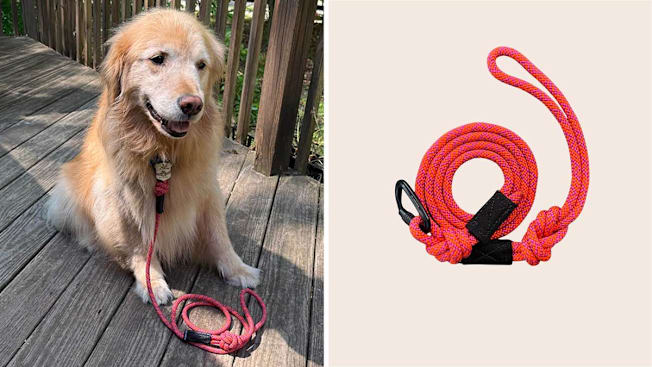
Like any number of dog leashes aimed at sporty dogs and owners, this model is made of climbing rope—5 feet, 16 inches in this case. Adding to its outdoor bona fides, it attaches to your dog’s collar with a sturdy aluminum carabiner like those a rock climber might use.
Wilderdog makes more than 30 leash variations in a range of colors, lengths, diameters, and carabiner sizes. Our testers found the bright orange and fuchsia Wilderdog Sierra to be legit pretty. On closer inspection, though, I wasn’t all that thrilled with how the ends of the rope are secured for the hand loop and the carabiner. They’re simply tied off, giving the leash a DIY vibe that doesn’t quite jibe with the premium price.
On one level, the serious screw-lock carabiner looks like it should be in rock climber Chris Sharma’s gear bag. We chose the midsized option, which seemed right for our dogs and our hands. But to fully secure it, you have to screw down a locking collar, which can be a chore—and a serious security problem if you forget. Once it’s screwed down, however, it’s probably the most secure clasp we used.
Dog reactions: For Seth, Melissa’s short-haired beagle, screwing down the carabiner lock wasn’t an issue at all. But for the furrier dogs, Rugby and especially Pippa, it was easy to get the clip and screw tangled in the dog’s coat, which can end a lovely walk with an annoying moment.
Human reactions: The finish of Sierra’s polypropylene/polyester rope is more than slightly rough to the touch. I guess it’s meant to make you think it’s rugged, but it just seems coarse to me. Melissa liked the fact that the rope is a bit stretchy, so that it wasn’t quite so jarring when Seth pulled her. Note also that Wilderdog’s limited lifetime guarantee doesn’t cover damage caused by chewing, improper care or storage, cleaning, accidents, minimal wear and tear, or product modifications.
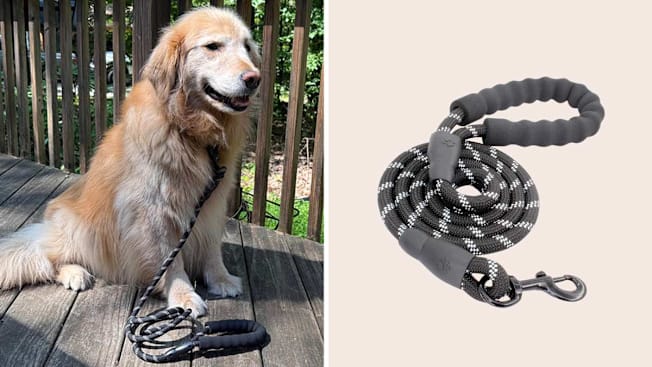
This value-priced climbing-rope leash is built on the idea that your dog doesn’t quite know its own strength. The half-inch rope is overbuilt, thicker than you’d expect, and the foam handle seems to be designed to protect your hands when Fido thinks trying to yank the leash from your grip might be fun.
At first glance, the Baapet lacks some of the niceties of the more expensive leashes. While the rope is sturdy, it’s more floppy than supple. And the foam handle may be thicker than necessary. (More about that in a minute.)
But the price is definitely right. The rope is also reflective, which is a nice safety feature for sunrise and sunset walks. The metal clasp is serviceable and likely to hold up to long-term use. It’s also relatively easy to use, although Janet, Pippa’s mom, did find it to be too small and fiddly.
Dog reactions: I imagine that our dogs felt about this leash roughly the way kids feel about a parent distracted by a phone or a conversation with a friend. It’s an opportunity to get away with things. “I felt disconnected from my dog,” Melissa said. Seth? He noticed and he hit the jackpot, snarfing down an entire slice of pizza on a field trip to Astoria, Queens, before Melissa could notice. No harm in this case, but if the object of curiosity had been something dangerous, like a chicken bone, this could be a problem.
Human reactions: There was vehement disagreement about the handle. My wife, Sally, liked the cushy foam. My daughter Emma was much less of a fan, suggesting that it reminded her of the padding on a windshield scraper—and not in a good way. Melissa loved the way it felt (“remarkably comfortable”), but also felt disconnected (see the pizza story above). The good news? If you hate it, you can simply remove all or part of the foam with scissors.
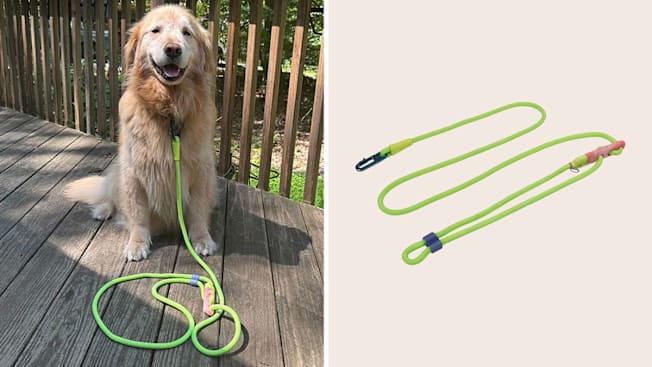
One of the good—and bad—things about walking a dog is that there’s not much room for multitasking. Your hands are occupied with, well, holding the dog. The Zee.Dog Gotham attempts to change that, allowing you to walk your dog hands-free.
The leash is made of very soft, stretchy climbing rope that can be wrapped around your waist, draped over your shoulder, or used as a longer conventional leash if you’re so inclined.
With its bright colors, plastic hardware, and super-soft rope, the Zee.Dog felt a little funky and even toylike, which is surprising given the price. The neon yellow or pink color did, however, make it very easy to see.
The Zee.Dog’s rope has more stretch than the other leashes on this list. That’s probably a good thing in that it gives you a bit of a warning when your dog is about to pull. A bigger problem: The latch is harder to open and close than that on most of the other models in this test.
Dog reactions: Maybe it’s because our dogs are relatively calm and well-trained, they didn’t seem inclined to take advantage of the newfound freedom afforded by the Zee.Dog. They walked farther away but didn’t really yank or pull.
Human reactions: Our testers were initially very skeptical of this leash, but it exceeded their expectations. They found it comfortable to wear around the waist and as a sash. “I thought I would hate it and thought I would be pulled over, but it was the most connected I’d ever felt to my dog,” said Melissa, who moved quickly from skeptic to convert. On the demerit side, the instructions about how to secure the leash around your waist or shoulder, which are in a video accessed by a QR code, are cursory at best.
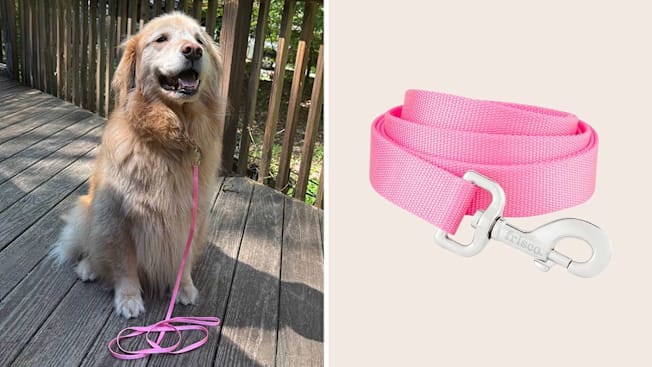
If someone says “dog leash,” the Frisco Nylon Leash (or something very much like it) is what generally springs to mind. It’s a flat, relatively thin nylon leash with a basic loop handle and a straightforward spring-loaded chrome clasp. It’s also very inexpensive, coming in at well under $10.
This no-nonsense leash, sold by Chewy, doesn’t offer any unique features. You simply choose the width, the length, and the color, but it seems well-constructed. The loop and clasp are both stitched onto the nylon leash quite securely.
The clasp? Maybe it’s a matter of getting what you pay for. Janet, who walks Pippa, the smallest dog in our group, found it to be difficult to secure and just plain annoying. The larger models were easier to manage, but the Frisco was better suited to occasional use than three-times-a-day walking.
Dog reactions: Rugby seemed to recognize the larger model of the Frisco leash as something she might chew if given the opportunity, so I took it out of her mouth before she could do any damage. But the rest of our canine testers didn’t, um, bite on that opportunity.
Human reactions: Our human walkers didn’t have all that much to say about the Frisco. The flat nylon draped nicely, and, unlike on similar generic leashes, the edge was smooth and not rough or jagged enough to scratch your legs or your hands. The compact handle and smallish clasp allow you to stash the leash in a jacket pocket when not in use. Lightweight, low-cost, and generally easy to attach to a collar, the Frisco makes for a perfect backup leash that you can toss into your car trunk.
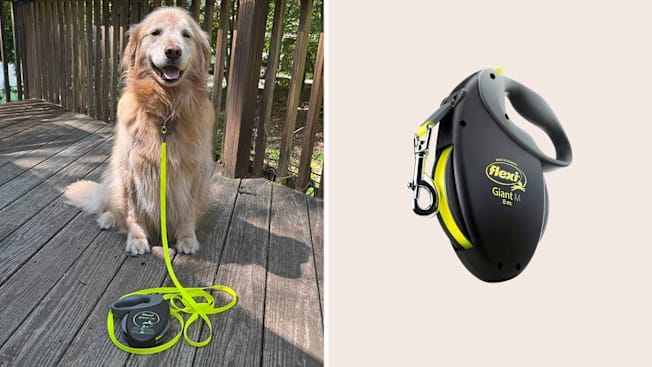
The Giant model with a mechanical plastic handle and a flat nylon retractable leash was by far the longest option in our test. It’s a whopping 26 feet, though we also tested a 16-foot Neon model for the smaller dogs.
Our testers found the plastic handle comfortable, but that was offset by the fact that it’s quite heavy, too. To control the line, you press a button on the handle with your thumb. A lock on the mechanism allows you to restrict the leash to a set length.
As with any leash, there’s a concern about your dog getting away. But the manufacturer of the long and thin Flexi leashes we tested includes an instruction sheet that warns about potential dangers for the person walking the dog and bystanders, too. They include tripping (if a dog loops the leash around your legs) and amputation (if you get your fingers tangled in the leash and the dog pulls hard). Just retracting the leash reminded me of using a metal tape measure when it recoils by surprise and nearly pinches your fingers. While none of our testers encountered this situation with the Flexi, reading the extensive instructions made them treat the models with respect.
Dog reactions: The Flexi seemed to confuse many of our dogs. It was easy for them to take advantage of all the slack and end up 20 feet away from you. But that was followed by a hard stop when the dog ran out of line. And because the owner can apply the brakes at almost any point, the dog didn’t know whether its leash was 4-feet-long, 6-feet long, 10-feet long, or more than 20-feet long.
Human reactions: In general, controlling slack with the Flexi was the biggest impediment to a safe and comfortable dog walk. Given freedom to run, even a small dog can generate enough force to knock you off balance. “I didn’t enjoy the learning curve,” Melissa said. “It made me nervous because I never know when my dog will react to another dog or an animal. I needed to master getting quick enough to reel my dog in.” But Janet, Pippa’s owner, found the Flexi leash to be surprisingly good for a small dog with modest ambition.
Methodology for Our Dog Leash Evaluation
After receiving a list of bestselling and buzzworthy leashes from a Consumer Reports market analyst, I narrowed the selection to six models at prices from under $10 to nearly $100.
We enlisted four dogs and seven humans to help with the trials (most of the dogs live in households with multiple humans), ordering leashes in the size most appropriate for each dog. The dogs wore their own collars or harnesses.
Most of the dogs live in a northern New Jersey suburb that offers a variety of walking options, from tree-lined suburban streets (with squirrels and chipmunks aplenty) to quasi-urban shopping districts with heavy foot and vehicular traffic. There are also several large parks and nature preserves for woodsy walks.
The humans evaluated the leashes in several ways. The first was general observation: “How did the dogs like the leashes?”
We also observed and interpreted any changes in the dog’s behavior.
And finally, we asked about personal preferences. Was the leash long enough? How did it feel? Could you tell what your dog was doing and make minor “corrections” with ease?
The less conventional models required a bit more thought. Did they enhance (or detract from) the walking experience? Were they easy to use for both dog and owner? Did they actually address the problem they purported to solve? Did they create new problems? And, ultimately, did the testers (and their dogs) like the leashes enough to consider purchasing them?
Using all of that input, we were able to determine the pros and cons for each model, including how well it accommodated the dog’s size and general demeanor.

















